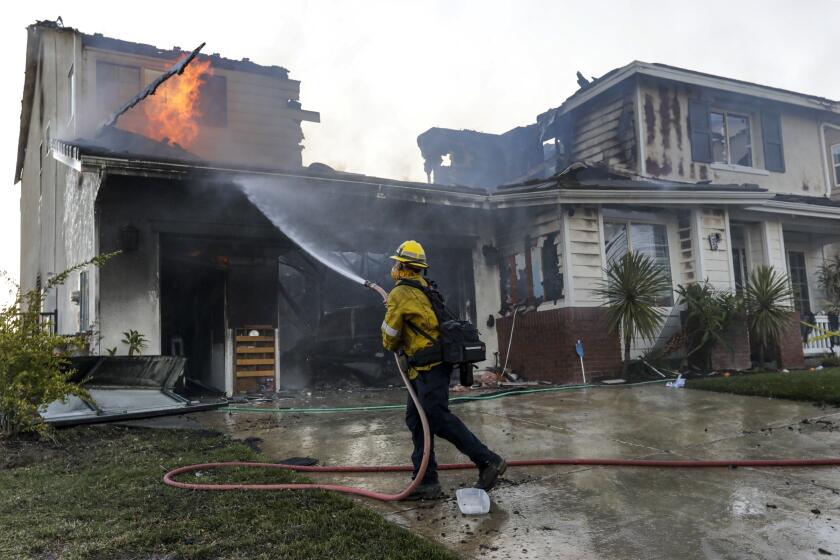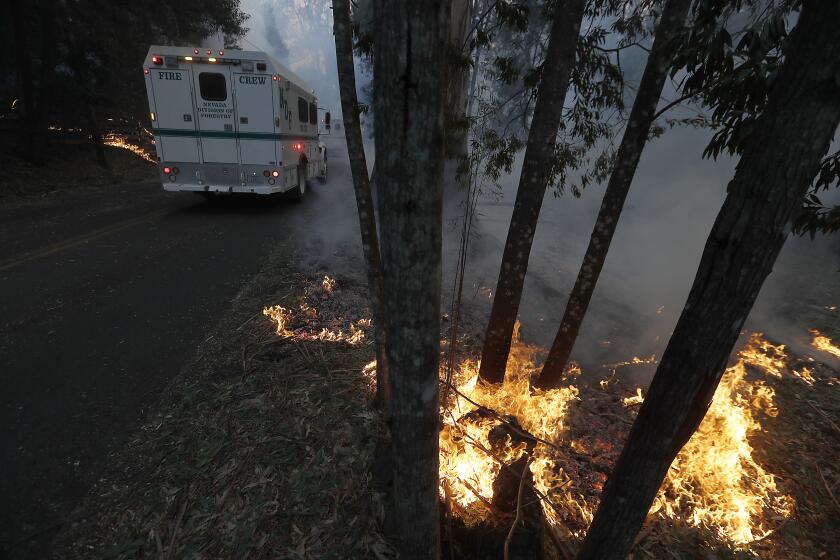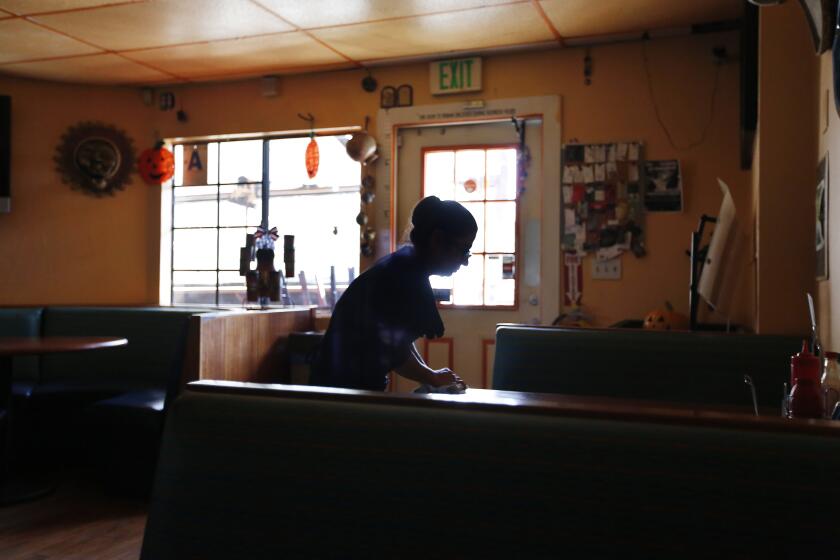PG&E failed to notify 23,000 of blackouts; CPUC launches probe of utility power outages
- Share via
Pacific Gas & Electric on Monday revealed that it failed to notify about 23,000 of its customers of precautionary power shutdowns earlier this month and also disclosed that its equipment malfunctioned near two fires that broke out in Contra Costa County on Sunday afternoon.
The utility disclosed the incidents in filings to the California Public Utilities Commission on Monday, the same day the CPUC announced it will investigate how PG&E and other utilities handled shut-offs this year amid competing demands. Critics want PG&E to stop causing more wildfires, but the utility has also come under fire for causing massive power blackouts, often without adequate notice to the public and vulnerable populations.
The utility de-energized lines to 729,000 of its customers between Oct. 9 and Oct. 12, but notifications were not sent to about 23,000 customers, including 500 with medical conditions, PG&E stated in a CPUC filing.
Those not notified did not have contact information on file with the company or were overlooked because of the shifting grid patterns that the utility was establishing, among other reasons, said PG&E officials, who declined to comment beyond what was stated in the report.
Utility power outages are complicating evacuation efforts as wildfires rage in Northern and Southern California.
The company said it tries to reach customers who require power for medical equipment — known as medical baseline customers — through any means necessary, including phone calls, text messages, emails or knocks on the door.
“Of the 30,026 medical baseline customers impacted, PG&E verified 29,144 received notice prior to de-energization,” the report stated. “A total of 28,138 confirmed receipt of a notification, which included 5,080 door knocks. The medical baseline customers that did not confirm receipt of an automatic notification prior to de-energization had received multiple contact attempts.”
PG&E, which filed for bankruptcy this year, faces liabilities for causing several California wildfires, and it has recently faced accusations it is triggering power shutdowns mainly to avoid further financial exposure.
In its regulatory filing on Monday, the utility acknowledged it could not keep repeating such wide-scale power outages.
“While PG&E recognizes the scope of the October 9 event is unsustainable in the long term, it was the right decision given the large-scale weather event and the damage to PG&E’s electric system that unfolded across our service area,” the report said.
Utility workers found 120 wind-related issues and hazards on PG&E’s de-energized grid, including damaged equipment and branches into power lines — the types of incidents that have sparked so many fires in the past.
But things are expected to change going forward, not just for PG&E but for every utility considering precautionary power shutoffs, Gov. Gavin Newsom and state regulators said Monday.
“I want to see the CPUC launch a total reform of power shutoff rules and regulations,” Newsom said in a statement. “Utilities must be held accountable and be aggressively penalized for their overreliance on [power shut-offs], and the product of this investigation must be new rules and regulations to do that.”
PG&E plans another major power outage this week as Diablo winds return
Even before Newsom issued his statement, the CPUC announced it would launch a formal investigation in the next 30 days reviewing how utilities handled shut-offs in 2019 and whether they followed all state regulations.
The watchdog agency will also examine the current protocols and weigh what actions utilities can take in the next six months to limit the impact of future shutdowns.
“The state cannot continue to experience [shutdown] events on the scope and scale Californians have experienced this month, nor should Californians be subject to the poor execution that PG&E in particular has exhibited,” said CPUC President Marybel Batjer in a statement.
Separate from its report on the outages earlier this month, PG&E filed two incident reports Monday that its workers found a downed power pole and a broken lashing wire in separate locations of Contra Costa where fires had begun about an hour earlier.
Neither of the fires were the ones that shut down the Carquinez Bridge on Sunday, creating dramatic flames and smoke at a gateway to the Bay Area.
About 1:30 p.m. Sunday, officials said two fires broke out on either side of State Route 24, one off Camino Diablo Road and another off Pleasant Hill Road.
According to PG&E’s filings, required under state law, the utility discovered downed equipment in both areas hours later.
The fires damaged part of a Lafayette tennis club along with some other buildings, and there was also damage to one home. Wind-driven embers jumped onto State Route 24 and ignited the grassy median, officials said.
At about 4:45 p.m., a PG&E “troubleman” — a power line inspector — arrived at Pleasant Hill and Condit Roads in Lafayette and “observed that the lashing wire of a communication cable near the PG&E open wire secondary conductor was broken,” the utility said in its incident report. “ Contra Costa Fire Department personnel on site communicated to the troubleman that they were looking into contact between the communication lashing wire and PG&E open wire secondary as a potential ignition source.”
PG&E’s CEO has said wildfire-prevent blackouts could continue for another decade.
About an hour later, a PG&E troubleman showed up at the location of the second fire ignition on Camino Diablo Road on the other side of State Route 24, the utility’s incident report stated.
“At the location, the Troubleman observed a fallen pole and transformer. Contra Costa Fire Department personnel on site communicated to the Troubleman that they were looking at the transformer as a potential ignition source,” the report said.
Power was flowing through the lines where the equipment failed and where both fires broke out. Neither of the locations were in high-risk fire zones subject to the precautionary blackouts, PG&E said.
More to Read
Sign up for Essential California
The most important California stories and recommendations in your inbox every morning.
You may occasionally receive promotional content from the Los Angeles Times.














